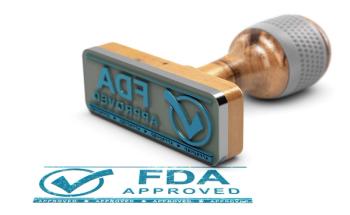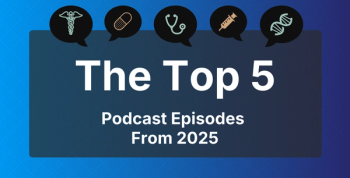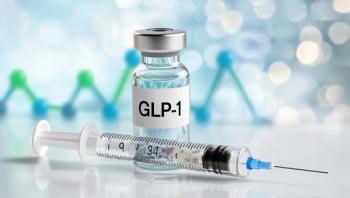
GLP-1 Usage Post Bariatric Surgery Requires More Research
Key Takeaways
- GLP-1 agonists are increasingly used post-bariatric surgery, with semaglutide being the most common, especially among younger, female, and Black or African American patients.
- The study highlights the need for further research to understand the optimal timing and impact of GLP-1 use on bariatric surgery rates.
Researchers call for further studies on GLP-1 initiation after bariatric surgery to better understand its real-world impact.
Glucagon-like peptide-1 (GLP-1) agonist receptors are commonly used post-bariatric surgery, and the efficacy of their use is well researched; however, their real-world use has not been well characterized, nor has their overall or specific subpopulation interest.1
Following surgery, obesity-related comorbidities like hypertension and diabetes may also accompany the remission period.3 Revision surgery and pharmacotherapy, including treatment with GLP-1 medicines, are potential solutions for those not satisfied with their weight loss journey post-surgery. Prior research already supports the efficacy of GLP-1 use post-bariatric surgery, yet real-world data supporting everyday practices are not well understood—information that is important not just for any patient, but subpopulations who are disproportionately affected by obesity.1
“Our findings are important given the surge of interest in the use of GLP-1s for the treatment of obesity and the unclear role that they play in individuals after bariatric surgery,” the study authors wrote. “Before the introduction of GLP-1s, individuals who experienced suboptimal weight loss or weight recurrence after bariatric surgery had few effective pharmacotherapeutic options other than revision surgery.”
The study used electronic health record data from the TirNEtx global collaborative network, selecting patients who had undergone bariatric surgery from January 1, 2015, to May 31, 2023. The bariatric surgeries assessed were a sleeve gastrectomy and Roux-en-Y gastric bypass. Patients who did not use GLP-1s during the 12 months prior to surgery were also eligible for inclusion. GLP-1 usage was tracked from the first receipt of prescription to the end of the study period. The medications identified were semaglutide, liraglutide, tirzepatide, exenatide, lixisenatide, and dulaglutide—all approved by the FDA.
Covariates were comprised of available data in electronic health records, literature review, and clinical expertise, including age, sex, race, ethnicity, marital status, and regional location. Pre-surgical body mass index (BMI) was measured within an 180-day window before the first surgery and post-surgical BMI and categorized as underweight (< 18.5), healthy weight (18.5 to 25), overweight (25 to 30), class 1 obesity (30 to 35), class 2 obesity (35 to 40), or class 3 obesity (≥ 40). The median presurgical BMI was 42.0. Comorbidities based on guidelines from the American Society for Metabolic and Bariatric Surgery included type 2 diabetes, hypertension, dyslipidemia, obstructive sleep apnea, heart failure, asthma, steatotic liver disease, chronic kidney disease, polycystic ovarian syndrome, and gastroesophageal reflux disease. The three most common comorbidities were hypertension, obstructive sleep apnea, and dyslipidemia.
GLP-1 Use Post-Bariatric Surgery Characteristics
Of the 112,858 individuals who underwent bariatric surgery and met the study participant criteria for the primary analysis, the mean age was 45.2, and 88,994 (78.9%) were female. Self-reported race observed 1210 individuals (1.1%) were Asian, 24,941 (22.1%) were Black or African American, 72,423 (64.2%) were White, and 14,284 (12.6%) reported other races (American Indian or Alaska Native, Native Hawaiian or other (ie, Pacific Islander, or unknown)). By ethnicity, most were non-Hispanic/Latino (82230 [73.8%]). Furthermore, 75,033 participants (66.5%) underwent sleeve gastrectomy, and 37,825 (33.5%) underwent Roux-en-Y gastric bypass.
Only 5975 (5.3%) of individuals took non-GLP-1 anti-obesity medications before bariatric surgery, and 14% (n = 15,749) initiated GLP-1 use after bariatric surgery. Those who initiated GLP-1 use post-surgery were often younger (mean [SD] age, 44.9 [11.3] years vs 45.2 [13.2] years) than non-users. It was also more common for females to initiate usage than male patients (n = 13418, 15.1% vs n = 2331, 9.7%) and similarly for Black or African American vs White patients (n = 3931, 15.8% vs n = 9766, 13.5%). GLP-1 initiation was most common during the third year post-surgery, while the total number of initiations increased from 9 in 2015 to 4983 in 2024. Overall, semaglutide (n = 9110, 57.8%) was the most frequently used drug throughout the total follow-up time.
Among baseline characteristics, those who underwent a sleeve gastrectomy were more likely to initiate GLP-1 usage than those who underwent a Roux-en-Y gastric bypass. In addition to individuals with a BMI higher than 40—who had the highest likelihood of initiation—those with comorbidities like type 2 diabetes, obstructive sleep apnea, dyslipidemia, and steatotic liver disease were also significantly more likely to initiate postoperative GLP-1 usage when compared with their counterparts.
The study had several limitations, including its reliance on FDA approvals of semaglutide and tirzepatide, which may limit the study’s applicability to current practices. Prescribing data did not capture dose, titration schedule, or adherence, which suggests considerable gaps in understanding treatment efficacy.
“Despite interest in the use of GLP-1s as an adjunct to bariatric surgery, the optimal timing of such use remains unclear,” the study author wrote. “Further study is needed to understand whether the widespread adoption of GLP-1s will reduce rates of bariatric surgery. While there is some suggestion of a recent decline in bariatric surgery use, a causal relationship between GLP-1s and surgery rates remains unclear.”
References
1. Kim M, Schweitzer AM, Kim JS, Alexander GC, Mehta HB. Use of glucagon-like peptide-1 agonists among individuals undergoing bariatric surgery in the US. JAMA Surg. Published online August 27, 2025. doi:10.1001/jamasurg.2025.3089
2. Klein HE. Surgeries and endoscopic procedures offer different benefits for MASLD. AJMC®. July 1, 2025. Accessed August 27, 2025.
3. Lauer KV, Harris DA, Funk LM. The GLP-1 era—what comes after bariatric surgery? Commentary on: Kim M, Schweitzer AM, Kim JS, Alexander GC, Mehta HB. Use of glucagon-like peptide-1 agonists among individuals undergoing bariatric surgery in the US. JAMA Surg. Published online August 27, 2025. doi:10.1001/jamasurg.2025.3089
Newsletter
Stay ahead of policy, cost, and value—subscribe to AJMC for expert insights at the intersection of clinical care and health economics.





























































